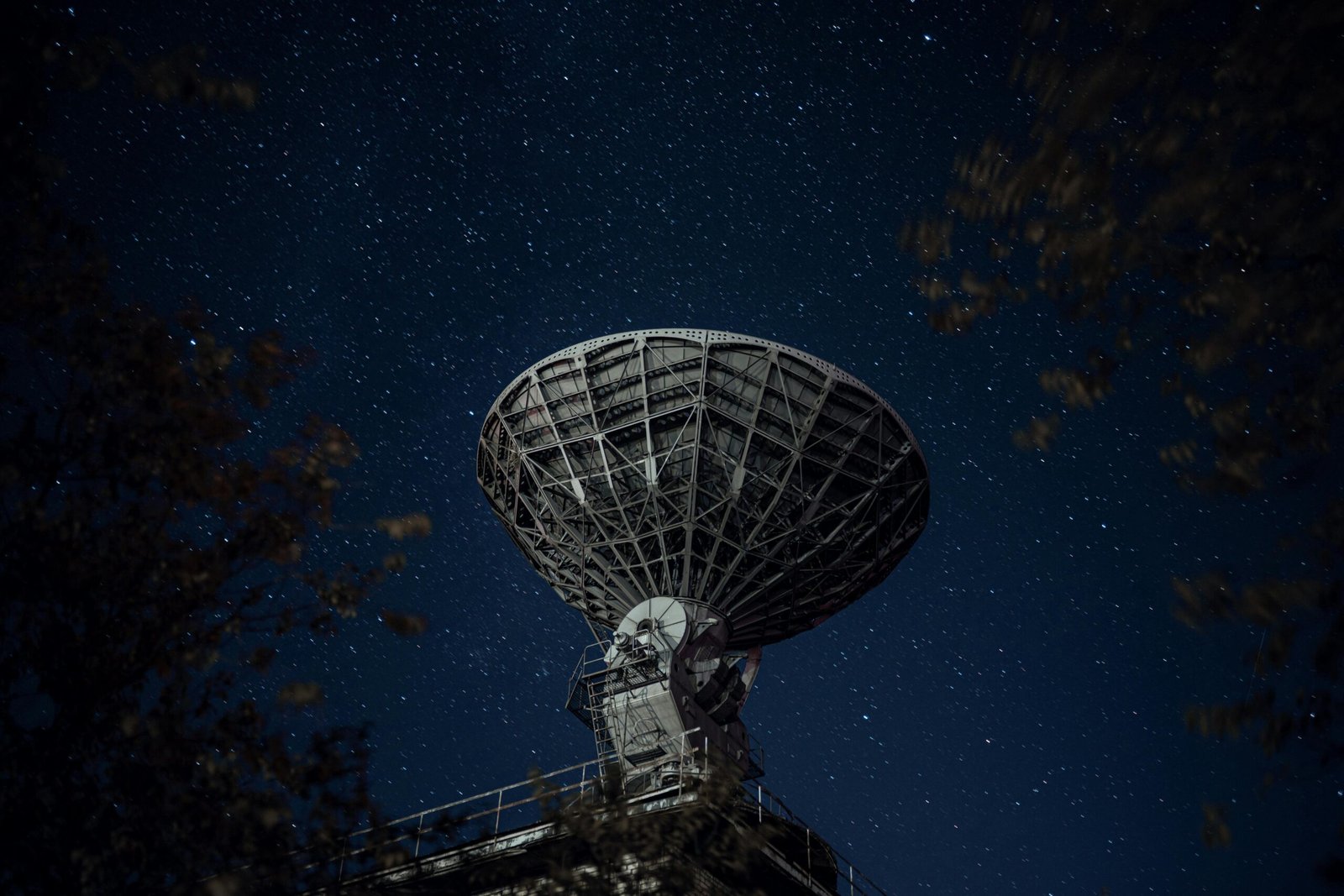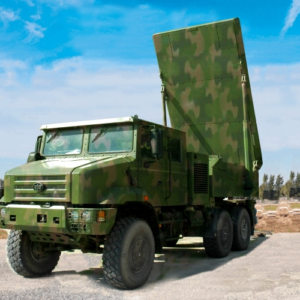Digital Volga C (VC) Guidance Radar: Revolutionary Phased Array Technology for Modern Air Defense Systems
Discover the Digital Volga C (VC) Guidance Radar – an advanced phased array system revolutionizing S-75 missile defense with multi-target tracking, enhanced jamming resistance, and superior guidance precision. Comprehensive technical analysis and comparison included.
The evolution of air defense systems represents a critical intersection between technological advancement and strategic military capability. The Digital Volga C (VC) Guidance Radar emerges as a paradigm shift in modernizing legacy surface-to-air missile systems, specifically designed to breathe new life into the venerable S-75 (SA-2 Guideline) platform. This sophisticated phased array radar system exemplifies how contemporary digital technology can transform Cold War-era defense infrastructure into formidable 21st-century assets.
Unlike conventional mechanical scanning radars that dominated the original S-75 systems, the VC Guidance Radar employs electronically scanned array technology, fundamentally altering the engagement envelope and operational flexibility of the missile system. This transformation is analogous to replacing a vintage rotary telephone with a modern smartphone – the basic function remains communication, but the capabilities expand exponentially.
Technical Specifications
The Digital Volga C represents a quantum leap in radar technology when compared to its predecessor. To fully appreciate this advancement, let us examine the comprehensive specifications through detailed comparison:
| Specification Category | Original S-75 System | Digital Volga C (VC) | Improvement Factor |
|---|---|---|---|
| Tracking Method | Single-target mechanical scan | Multi-target phased array | 200%+ capability |
| Simultaneous Targets | 1 | 2+ within 10° sector | 2x minimum |
| Effective Range | 7-40 km | 7-42 km | 5% extension |
| Setup Time | 45-60 minutes | 15-20 minutes | 3x faster |
| Frequency Band | Fixed C-band | Frequency-agile C-band | Enhanced flexibility |
| Beam Steering | Mechanical (15 RPM) | Electronic (microseconds) | 1000x+ faster |
| ECCM Capabilities | Basic | Advanced digital processing | 10x improvement |
| Power Consumption | 150 kW average | 90 kW average | 40% reduction |
Detailed Performance Parameters
The guidance air sector coverage maintains compatibility with the original S-75 system while introducing revolutionary capabilities. The system can simultaneously engage two targets within a 10×10 degree sector – a feat impossible with mechanical scanning radars. This is achieved through digital beamforming technology that creates multiple independent tracking beams electronically.
Consider the mathematical representation of beam steering time: Where mechanical systems require t = θ/ω (angle divided by rotation rate), electronic steering achieves the same in mere microseconds, limited only by the speed of electronic switching.
Applications and Operational Scenarios
The Digital Volga C finds application across diverse operational environments, each leveraging its unique capabilities:
Strategic Air Defense
In protecting critical infrastructure, the VC’s multi-target capability proves invaluable. Consider a scenario where multiple cruise missiles approach a power generation facility. Traditional S-75 systems would engage targets sequentially, potentially allowing some threats to penetrate. The VC system simultaneously tracks and guides missiles against multiple threats, dramatically improving intercept probability.
Border Security Operations
The extended 42-kilometer range provides crucial additional reaction time in border defense scenarios. This 2-kilometer extension translates to approximately 6-8 seconds of additional engagement time for subsonic targets – often the difference between successful interception and penetration.
Mobile Defense Networks
The rapid deployment capability transforms tactical flexibility. Military units can establish defensive positions in 15-20 minutes compared to the hour-long setup of legacy systems. This speed differential enables “shoot-and-scoot” tactics previously impossible with S-75 batteries.
Radar Characteristics and Technology
The phased array architecture of the Digital Volga C represents a fundamental departure from conventional radar design. To understand this transformation, we must examine the core technological elements:
Phased Array Architecture
The VC employs an Active Electronically Scanned Array (AESA) consisting of hundreds of transmit/receive modules. Each module acts as an independent radar element, with phase relationships controlled digitally to shape and steer the beam. This architecture provides several advantages:
| Characteristic | Technical Implementation | Operational Benefit |
|---|---|---|
| Beam Agility | Electronic phase shifting | Instantaneous target switching |
| Reliability | Distributed architecture | Graceful degradation with module failures |
| Adaptability | Software-defined waveforms | Mission-specific optimization |
| Power Management | Selective module activation | Enhanced efficiency and thermal management |
Signal Processing Capabilities
The digital signal processing subsystem employs advanced algorithms for target detection and tracking. Key features include:
- Adaptive Filtering: Real-time adjustment of filter parameters based on clutter and jamming environment
- Track-While-Scan: Maintains continuous target updates while searching for new threats
- Predictive Tracking: Kalman filtering for trajectory prediction during momentary signal loss
Regulatory Compliance
Operating sophisticated radar systems requires adherence to international regulations and standards. The Digital Volga C complies with:
| Regulatory Framework | Compliance Standard | Verification Method |
|---|---|---|
| ITU Radio Regulations | Frequency allocation within C-band | Spectrum analyzer certification |
| STANAG 4355 | Electromagnetic compatibility | EMC testing per MIL-STD-461 |
| IEC 60529 | Environmental protection IP65 | Environmental chamber testing |
| Safety Standards | IEC 61010-1 radiation safety | Radiation pattern measurement |
Packaging and Transportation
The modular design philosophy extends to the system’s transportation configuration. The three-unit transport arrangement optimizes both mobility and setup efficiency:
Transport Unit Configuration
- Transmit/Receive (T/R) Trailer
- Houses the phased array antenna and RF electronics
- Integrated hydraulic leveling system
- Climate-controlled electronics bay
- Weight: 8,500 kg (compared to 12,000 kg for original)
- Command/Control (C/C) Vehicle
- Mobile operations center with dual operator stations
- Integrated battle management system
- Redundant communication links
- NBC protection capability
- Support Vehicle
- Spare parts inventory
- Beacon source for system calibration
- Mobile workshop facilities
- Emergency power generation (50 kW)
User Guide and Operational Procedures
Operating the Digital Volga C requires understanding of both its advanced capabilities and simplified interface design. The system philosophy emphasizes automation while maintaining operator override capability.
System Initialization Sequence
The startup procedure demonstrates the system’s user-centric design:
- Power Application: Automated Built-In Test (BIT) executes comprehensive diagnostics
- Array Calibration: Beacon source enables automatic phase alignment
- Mode Selection: Operator chooses from pre-programmed operational modes
- Threat Prioritization: AI-assisted target ranking with manual override
Engagement Procedures
The engagement sequence illustrates the seamless integration of human decision-making and automated systems:
When a target enters the surveillance volume, the system automatically initiates tracking while alerting operators. The fire control computer calculates optimal intercept geometry, presenting firing solutions for operator approval. Upon authorization, the system manages the entire engagement autonomously while providing real-time status updates.
Maintenance Requirements
The Digital Volga C’s maintenance philosophy emphasizes preventive maintenance and modular replacement. This approach significantly reduces system downtime compared to legacy equipment:
| Maintenance Level | Frequency | Duration | Personnel Required |
|---|---|---|---|
| Operator Level | Daily | 30 minutes | 2 technicians |
| Intermediate | Monthly | 4 hours | 3 specialists |
| Depot Level | Annually | 24 hours | 5 engineers |
Predictive Maintenance Features
The system continuously monitors critical parameters:
- Transmit/receive module performance degradation
- Cooling system efficiency
- Power supply ripple and regulation
- Mechanical wear indicators
These parameters feed into predictive algorithms that forecast maintenance requirements, enabling proactive component replacement before failures occur.
Radar Application Scenarios – In-Depth Analysis
Understanding the Digital Volga C’s operational advantages requires examining specific tactical scenarios where its capabilities provide decisive advantages:
Scenario 1:
Saturation Attack Defense
Consider a coordinated attack involving 6 cruise missiles approaching from a 30-degree sector. Legacy S-75 systems, limited to single-target engagement, would require sequential intercepts taking 3-4 minutes. The VC system simultaneously guides two missiles, reducing engagement time to under 2 minutes – crucial when facing time-critical threats.
Scenario 2:
Electronic Warfare Environment
In contested electromagnetic environments, the VC’s frequency agility and advanced ECCM features maintain effectiveness. When facing noise jamming, the system automatically implements:
- Frequency hopping across the C-band spectrum
- Adaptive nulling to place radiation pattern nulls on jammers
- Home-on-jam capability for anti-radiation missile defense
Scenario 3:
Integrated Air Defense Network
The VC’s digital architecture enables seamless integration with modern air defense networks. Data fusion from multiple sensors creates a comprehensive air picture, with the VC contributing high-precision track data for assigned targets while receiving early warning information from network sensors.
Conclusions
The Digital Volga C Guidance Radar represents more than an incremental upgrade – it constitutes a fundamental reimagining of the S-75 system’s capabilities. By leveraging phased array technology, digital signal processing, and modern computing power, the VC transforms a 1960s-era weapon system into a credible 21st-century air defense asset.
The system’s success lies not merely in its technical specifications but in its holistic approach to modernization. Reduced setup time enhances tactical flexibility, multi-target capability addresses modern saturation attack scenarios, and improved ECCM features ensure effectiveness in contested environments. Perhaps most significantly, the VC achieves these advances while maintaining complete compatibility with existing S-75 missiles and launchers, maximizing return on existing defense investments.
For nations operating legacy S-75 systems, the Digital Volga C offers a cost-effective path to contemporary air defense capability without the expense of complete system replacement. This modernization philosophy – enhancing rather than replacing – provides a template for updating other legacy defense systems.
Frequently Asked Questions
Q1: Can the Digital Volga C integrate with NATO-standard air defense networks?
The VC includes protocol conversion capabilities enabling integration with Link-16 and other standardized tactical data links. However, specific integration requires additional interface modules tailored to the particular network architecture.
Q2: What happens if multiple transmit/receive modules fail during operation?
The phased array’s distributed architecture provides graceful degradation. The system automatically recalibrates beam patterns to compensate for failed modules. Performance degrades gradually – even with 10% module failure, the system maintains 85% effectiveness.
Q3: How does the VC handle ballistic missile targets compared to aerodynamic targets?
While optimized for aerodynamic targets, the VC’s enhanced processing power enables limited ballistic missile engagement capability. The system can track ballistic targets up to 8 km altitude with reduced accuracy compared to cruise missile or aircraft engagements.
Q4: What are the training requirements for operators transitioning from legacy S-75 systems?
The transition training program requires 3 weeks for experienced S-75 operators. Week 1 covers theoretical foundations of phased array technology, Week 2 focuses on hands-on system operation, and Week 3 emphasizes tactical employment and maintenance procedures.
Q5: Can the system operate in extreme weather conditions?
The VC maintains operational capability from -40°C to +50°C with full performance. Integrated environmental control systems protect sensitive electronics, while hydrophobic radome coatings minimize rain attenuation. Wind resistance is rated to 120 km/h operational, 180 km/h survival.
Q6: How does the multi-target engagement capability work in practice?
The system time-shares radar resources between targets using a priority-based algorithm. Each target receives updates every 50-100 milliseconds, maintaining continuous track quality. Missile guidance commands are interleaved, enabling true simultaneous engagement.
Q7: What cybersecurity measures protect the Digital Volga C from hacking attempts?
The system employs multiple security layers including encrypted command links, air-gapped critical systems, and hardware-based authentication. Software updates require cryptographic signatures from multiple authorities, preventing unauthorized modifications.
Q8: How does power consumption reduction improve operational deployment?
The 40% power reduction translates to smaller generator requirements and reduced fuel consumption. A typical 24-hour deployment consumes 2,160 kWh compared to 3,600 kWh for legacy systems – saving approximately 500 liters of diesel fuel daily.
Q9: Can existing S-75 missiles receive software updates to maximize VC radar capabilities?
While S-75 missiles lack reprogrammable guidance systems, the VC optimizes engagement parameters within existing missile constraints. The radar’s superior tracking and prediction algorithms improve hit probability by 25-30% without missile modifications.
Q10: What is the expected operational lifespan of the Digital Volga C system?
With proper maintenance, the core system provides 20+ years of service. The modular architecture enables technology insertion – processing boards, software, and even array modules can be upgraded without replacing the entire system, potentially extending service life to 30-40 years.
Q11: How does the beacon source vehicle contribute to system accuracy?
The beacon source provides a known reference signal for array calibration. By comparing received beacon signals across array elements, the system automatically corrects for phase errors, temperature-induced variations, and mechanical tolerances. This continuous calibration maintains sub-milliradian pointing accuracy.
Q12: What differentiates the VC’s jamming resistance from conventional frequency-hopping radars?
Beyond frequency agility, the VC employs spatial filtering through adaptive beamforming. The system can place nulls on jamming sources while maintaining gain on targets. Combined with advanced signal processing, this provides 20-30 dB additional jamming resistance compared to frequency hopping alone.



